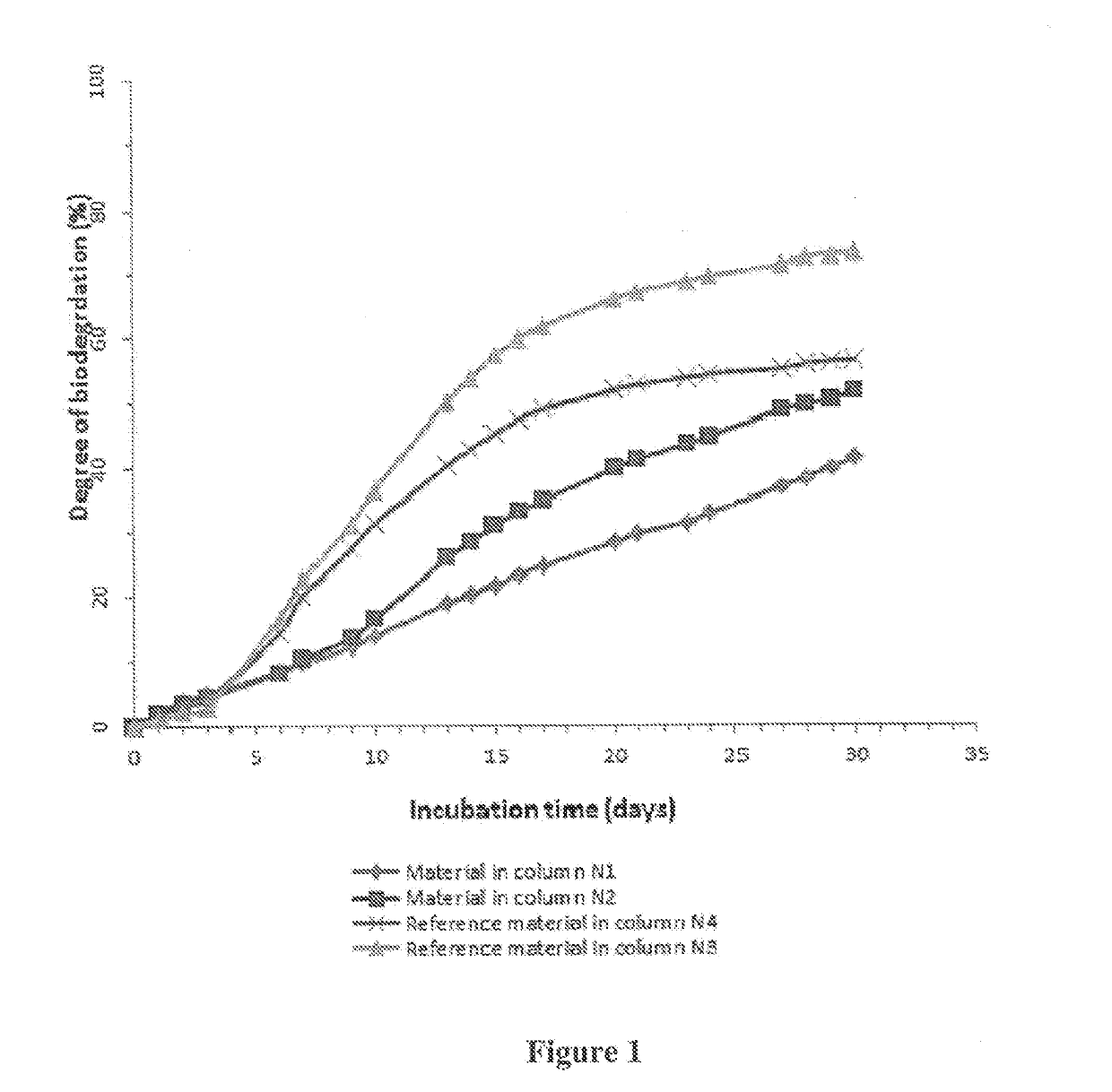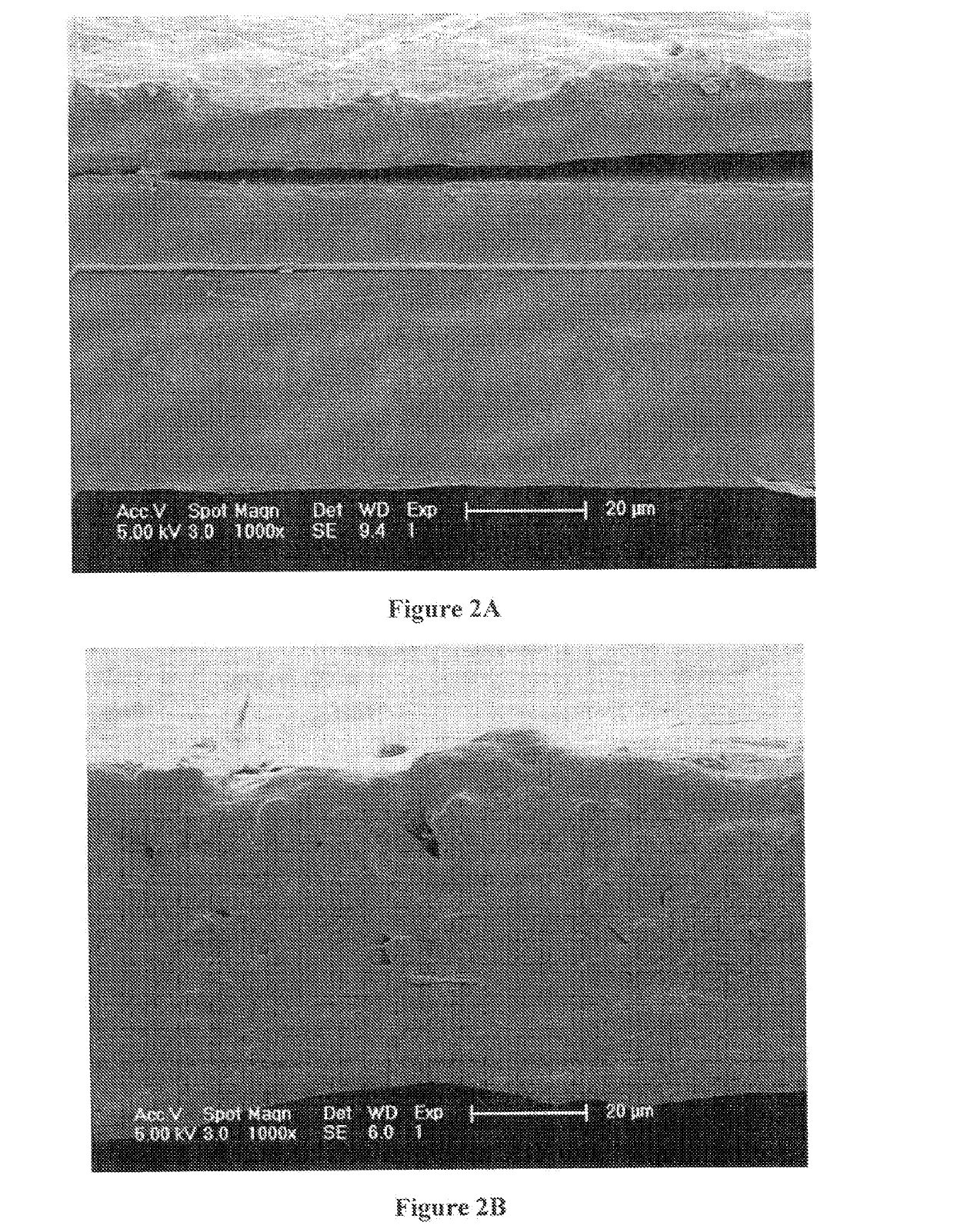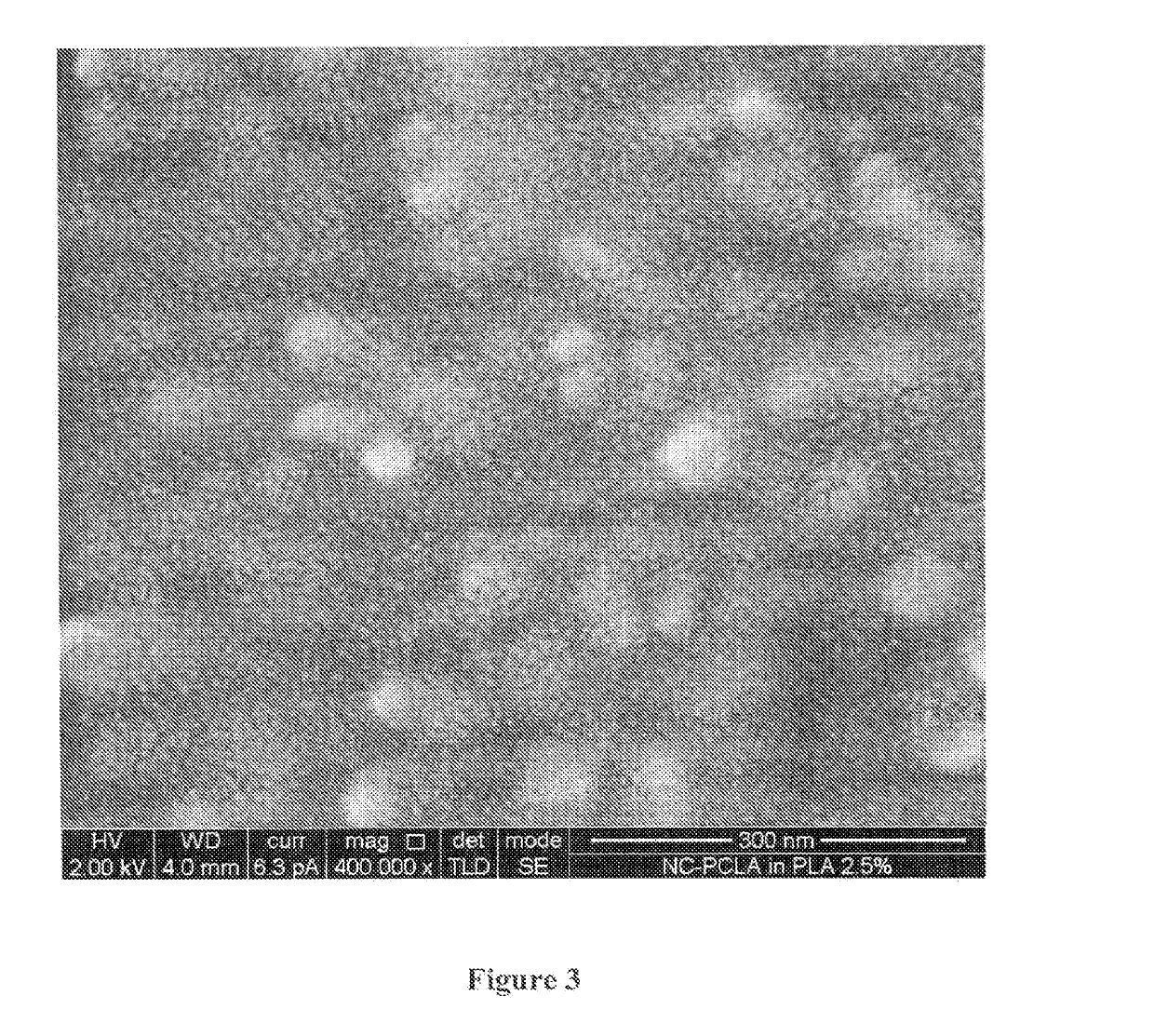Biodegradable sheet
a biodegradable and sheet technology, applied in the field of biodegradable sheet compositions, can solve the problems of poor candidates when flexible sheets or films are desired, poor candidates for and inability to presently believe that films can be blown from biomax and similar polymers. achieve the effect of high non-polar to polar ratio
- Summary
- Abstract
- Description
- Claims
- Application Information
AI Technical Summary
Benefits of technology
Problems solved by technology
Method used
Image
Examples
example 1
able Sheets Comprising PCL
[0279]As disclosed hereinbelow, PBS and PBSA purchased from Mitsubishi (Japan) are referred to as PBSm and PBSAm, respectively; PBS and PBSA purchased from Showa Denko (Japan) are referred to as PBSs and PBSAs, respectively, PCL was purchased from Perstorp (Sweden), oly-D,L-lactide and (P(D,L-LA)), (amorphous) were purchased from Natureworks (USA; PVOH was purchased from Nippon (Japan); PBAT was purchased from BASF (Germany); Crosslinkers MDI and Bu-dMA were purchased from Sigma; PCL2000-dMA were synthetized in the lab, ACHN was purchased from Sigma.
[0280]1. Biodegradable compounds with PCL, PBS and optionally PLA, without or with an initiator [1,1′-azobis (cyclohexanecarbonitrile) (ACHN) at 1%] and one of the cross-linking agents [proprietary oligo PCL 2000 polymerized with dimethacrylate (dMA) 1% or the commercially available, Butyl-dMA (Bu-dMA) 1%]; were prepared. The crosslinkers were embedded into the concentrate that was added to the compound.
[0281]2....
example 2
yered Biodegradable Sheets
[0448]All of the single layered sheets related to herein were 15-120 microns thick.
[0449]Sheet #1: A single layered biodegradable sheet consisting of 33.3% w / w PLA, 33.3% w / w PBS and 33.3% w / w Ecoflex was prepared as follows:
A. Melt Extrusion Compounding Stage:
1. 166.7 gr PLA, 166.7 gr PBS and 166.7 gr Ecoflex were dried overnight at a temperature of 50° C. under vacuum;
2. the dried polymers were dry blended and placed in a two screw PRISM compounder;
3. the polymers were melt extruded in the PRISM compounder set to the following profile:
i) temperature profile: 170-175-180-185-190° C. (the Die is set to 190° C.);
ii) screw speed: 250 rpm; and
iii) pressure: 15-25 bar.
B. Cast Extrusion Stage:
1. the melt extruded material was dried overnight at a temperature of 50° C. under vacuum;
2. the material was placed into a Randcastle Extruder set to the following profile:
i) 170-180-190° C.-180° C.-Adaptor; 185° C.-feedblock; Die-185° C.;
ii) screw speed: 80 rpm; and
iii) h...
example 3
ered Biodegradable Sheets
[0456]All of the three layered sheets related to herein were 100 microns thick.
[0457]Sheet #6: A three layered biodegradable sheet was prepared according to the procedure described above for Sheet #1, wherein the weight of each layer constitutes a third of the weight of the final sheet. The three layered Sheet #6 consists of the following three layers:
Layer 1: 33.3% w / w PLA, 33.3% w / w PBS and 33.3% w / w Ecoflex
Layer 2: 100% w / w PHA
Layer 3: 33.3% w / w PLA, 33.3% w / w PBS and 33.3% w / w Ecoflex
The measured physical properties of Sheet #6 were as follows: Stress at Maximum Load was 20 Mpa, the Strain at Break was 558% and Young's Modulus was 675 Mpa.
[0458]Sheet #7: A three layered biodegradable sheet was prepared according to the procedure described above for Sheet #1, wherein the weight of each layer constitutes a third of the weight of the final sheet. The three layered Sheet #7 consists of the following three layers:
Layer 1: 33.3% w / w PLA, 33.3% w / w PBSA and 33....
PUM
| Property | Measurement | Unit |
|---|---|---|
| degradation time | aaaaa | aaaaa |
| degradation time | aaaaa | aaaaa |
| light transmittance | aaaaa | aaaaa |
Abstract
Description
Claims
Application Information
 Login to View More
Login to View More - R&D
- Intellectual Property
- Life Sciences
- Materials
- Tech Scout
- Unparalleled Data Quality
- Higher Quality Content
- 60% Fewer Hallucinations
Browse by: Latest US Patents, China's latest patents, Technical Efficacy Thesaurus, Application Domain, Technology Topic, Popular Technical Reports.
© 2025 PatSnap. All rights reserved.Legal|Privacy policy|Modern Slavery Act Transparency Statement|Sitemap|About US| Contact US: help@patsnap.com



